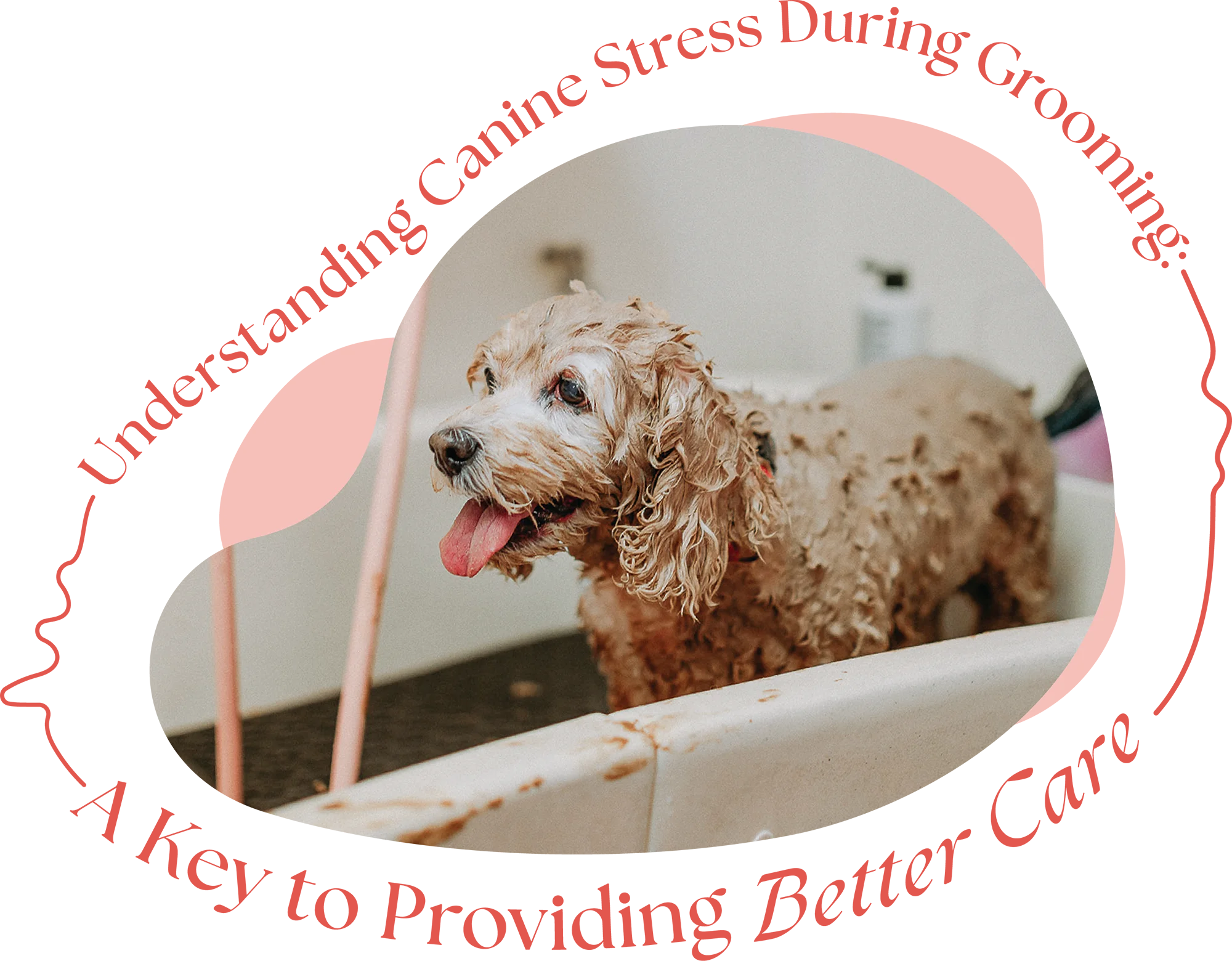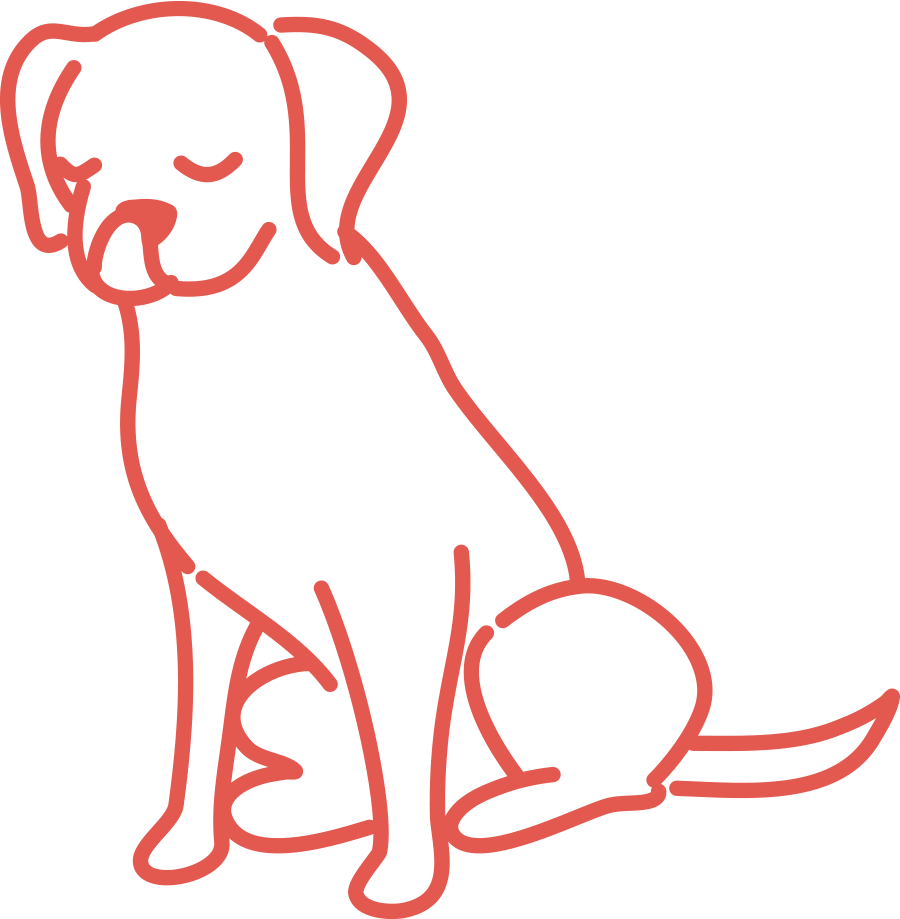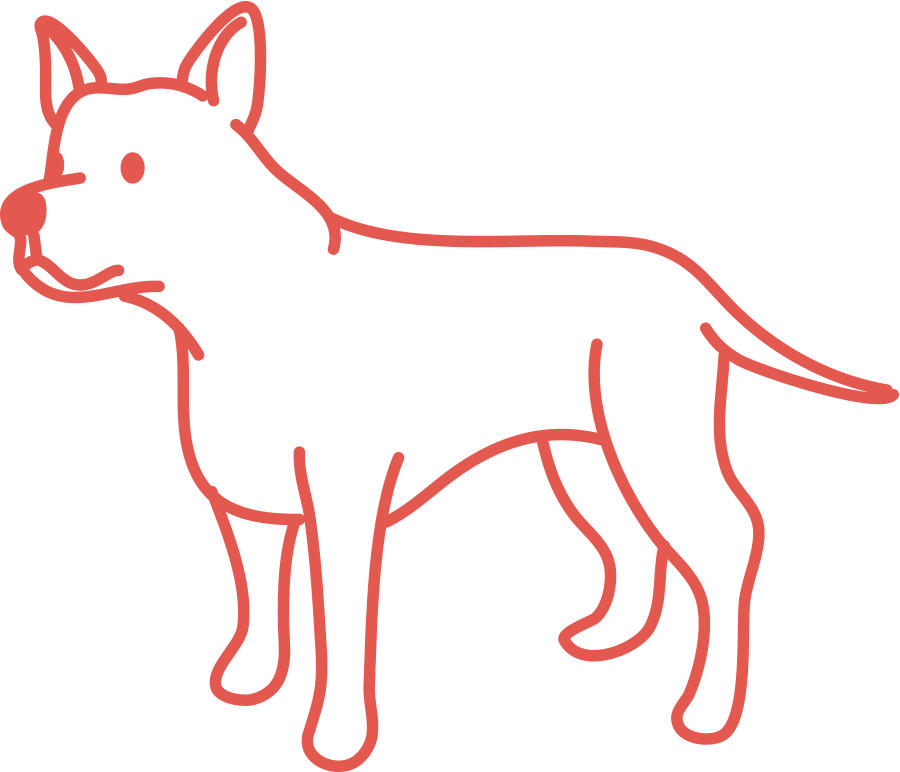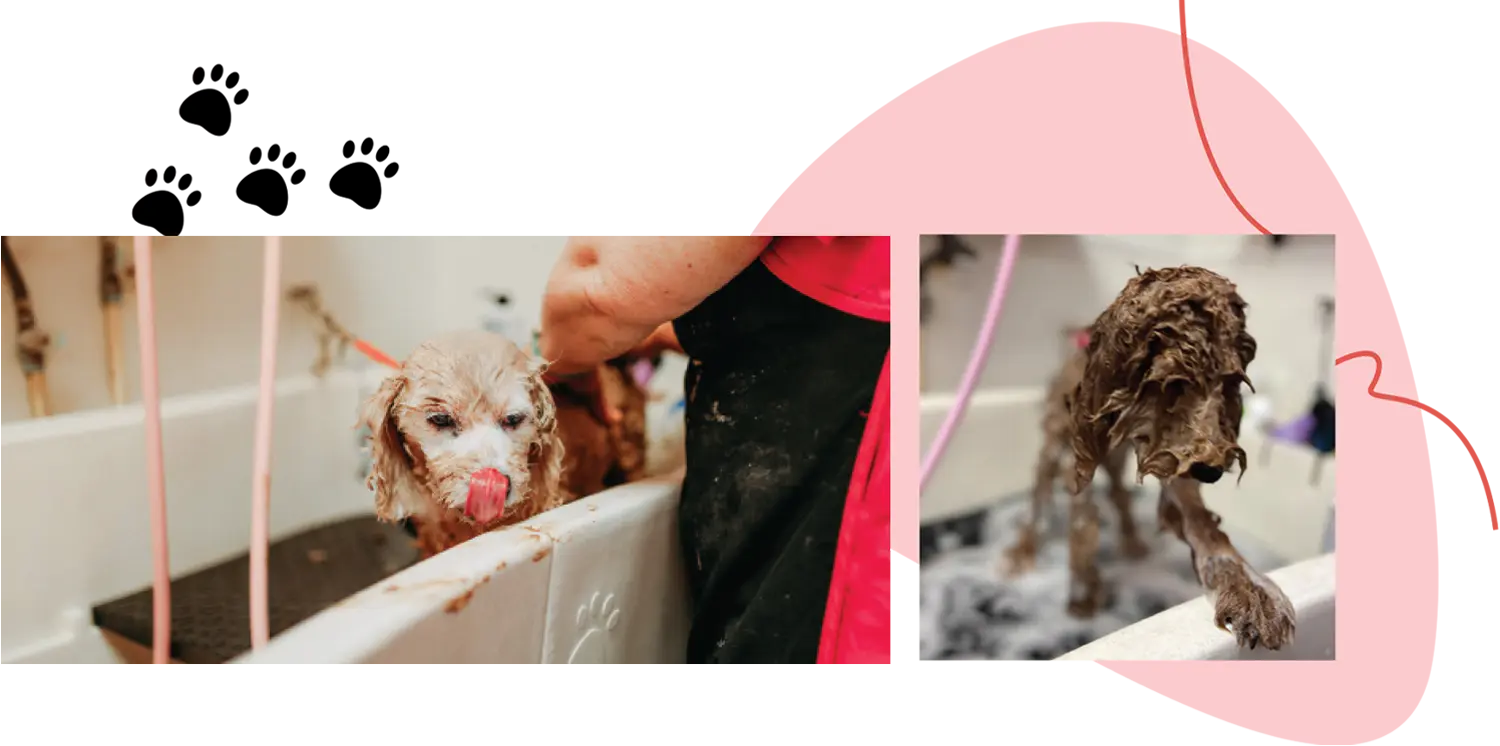
Photos provided by Little Barks Boutique
 n our line of work, we’ve all encountered dogs on our grooming tables who appear uncomfortable, are panting excessively or trying to escape—all clear signs of stress. We instinctively recognize these signals, but have you ever wondered what truly goes on in a dog’s mind during a grooming session?
n our line of work, we’ve all encountered dogs on our grooming tables who appear uncomfortable, are panting excessively or trying to escape—all clear signs of stress. We instinctively recognize these signals, but have you ever wondered what truly goes on in a dog’s mind during a grooming session?
In a 2022 case study published in the Brazilian Journal of Animal Science, researchers set out to investigate stress levels in dogs during their grooming experiences at a salon.1 The study involved a total of 55 grooming sessions, spanning from the moment the dogs were transported to the salon until they returned home.
The study encompassed evaluations of behavioral, physiological and blood components at various stages of the grooming process. The findings revealed that changes in dogs’ behavior and physiological parameters were most noticeable upon arrival and during the drying phase. Intriguingly, the characteristics of the groomers themselves also had an impact on the dogs’ behavior.
While grooming may seem like a straightforward process, it plays a vital role in a dog’s health and hygiene. Dogs undergo stressful situations during grooming, including interactions with unfamiliar people, contact with other dogs and exposure to a range of environmental factors. Though there is limited scientific research on this topic, studying how dogs behave during grooming can help us enhance the care we provide to our furry clients.
 Postural Responses: Dogs displayed reluctance and attempts to escape from stimuli. Their heads were often lowered compared to their shoulders, tails were held low, and ears were lowered with tails tucked between their legs.
Postural Responses: Dogs displayed reluctance and attempts to escape from stimuli. Their heads were often lowered compared to their shoulders, tails were held low, and ears were lowered with tails tucked between their legs. Calming Signals: Dogs exhibited calming signals such as raising a paw, lifting a front paw, licking their nose, yawning, looking away, turning their heads, and vocalizing.
Calming Signals: Dogs exhibited calming signals such as raising a paw, lifting a front paw, licking their nose, yawning, looking away, turning their heads, and vocalizing. Physiological Behaviors: Panting, rapid open-mouth breathing, shivering, and shaking were observed.
Physiological Behaviors: Panting, rapid open-mouth breathing, shivering, and shaking were observed. Behaviors Caused by Handling: Some dogs tried to escape, slipped, or changed positions.
Behaviors Caused by Handling: Some dogs tried to escape, slipped, or changed positions.Groomer’s Impact


Some dogs slipped during attempts to escape from bathing and drying, as they were not accustomed to the handling and the noises associated with it.
Escape Behavior
Kindness, empathy and attention to detail matter profoundly. Dogs are cherished members of families who trust us to provide the best care. As professional groomers, it is our responsibility to be their voice, to listen, observe and prioritize their needs.
By investing in training, knowledge and practicing kindness, we can make a positive impact on the lives of the dogs we groom. Let’s continue to put the welfare of dogs at the forefront of our work, ensuring they remain comfortable, safe, happy and healthy in our salons.
- Ferreira, M.; Rodriguez, M. A. P.; Oliveira, L. L. S.; Maranhão, C. M. A.; Oliveira, N. J. F.; Carvalho, C. C. S.; Afonso, M.V. R. and Madureira, M. R. 2022. Stress in dogs during grooming in a pet shop. Revista Brasileira de Zootecnia 51:e20200154. https://doi.org/10.37496/rbz5120200154
Kim Kier is the owner/groomer of Little Barks Grooming & Boutique, an award-winning luxury Salon in Columbia, South Carolina. She is also a Master Pet Aesthetician, Professional Grooming Credential (World Pet Association), Master Groomer Behavior Specialist, Fear Free Certified Professional, Low Stress Handling Certified Level Silver Certified, and Certified Puppy Consultant. Kim has recently been honored to be named “Grooming Guru” by Pet Product News International for 2023, and is the author of “Groomers Business Journal.”